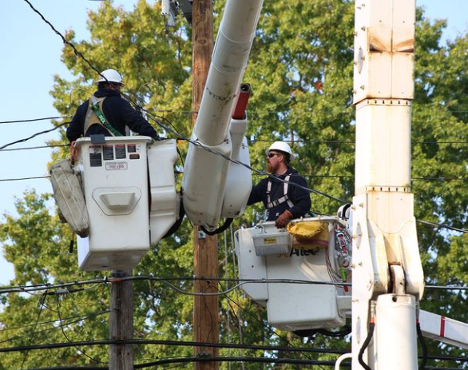Five Reasons to Regularly Update Overhead Allocations
A mundane exercise, but it can reap dividends for your utility
In the utility business, overhead costs can be greater than the direct costs of a project, i.e., labor and inventory. An effective overhead calculation process is one crucial factor in ensuring that infrastructure costs are recovered in customer rates.
There is more to overheads than rate recovery. While analyzing overhead costs is not one of the more exciting areas of construction accounting, keeping overhead costs up to date directly impacts project and departmental budgets and are part of effective project management and effective utilization of resources.
What are the overheads here? Labor, materials management, equipment, AFUDC
Here are five reasons (why five?) to urge keeping up with the regular analysis of overhead costs:
1. Cost trend analysis: Setting overhead baselines (i.e., the initial calculation) and then regularly analyzing overhead rates will help identify underlying cost trends. The trends may point to further investigations into costs that may be on the rise or have other fluctuations that need a deeper dive.
2. Operating income impacts: Recording overhead costs raises operating income by moving dollars from the income statement to the balance sheet as the overhead costs become part of an asset’s value. Higher operating income equals improved cash flows and bond coverage. Knowing the fluctuations in overhead costs is an input into determining electric rates.
3. Resource allocation: Analyzing overhead rates can help allocate resources effectively by identifying areas with higher trending overhead costs and determining if reallocating resources would provide cost efficiencies. For example, do higher trending stores (materials management) overheads indicate increasing staffing for the same level of service? Could staffing be reallocated for greater efficiencies?
4. Performance evaluation: Overhead rates can serve as performance indicators for departments or projects. By comparing actual overhead rates to budgeted overheads, a utility or electric cooperative can evaluate the efficiency and effectiveness of the area.
5. Budgeting and forecasting: Analyzing overhead rates provides insights into anticipating future costs and planning resource allocations. For example, if trends in equipment overheads result in an analysis that shows outsourcing of specific activities (lease vs. buy, use of outside contractors for repairs of water main or installation of utility poles), is more cost-effective. Decisions can be made on whether to use in-house or outsourced resources on a project.
Utility Accounting and Rates Specialists provides on-line/on-demand courses on operations and construction project accounting, rates, and management for new and experienced co-op and utility professionals and Board members. Click on the button to see a highlighted listing and description of our course offerings.
It can be an involved exercise to determine overhead cost inputs, develop rates, and convince department heads that the calculated overhead rates are correct. The numbers are not static, though. We recommend analyzing and setting new overhead rates for the coming year as part of the budget process.
Cost structures change due to operations, staffing, technology, and inflation. Overhead rates should reflect those changes.
About Russ Hissom - Article Author
Russ Hissom, CPA is a principal of Utility Accounting & Rates Specialists a firm that provides power and utilities rate, expert witness, and consulting services, and online/on-demand courses on accounting, rates, FERC/RUS construction accounting, financial analysis, and business process improvement services. Russ was a partner in a national accounting and consulting firm for 20 years. He works with electric investor-owned and public power utilities, electric cooperatives, broadband providers, and gas, water, and wastewater utilities. His goal is to share industry best practices to help your business perform effectively and efficiently and meet the challenges of the changing power and utilities industry.
Find out more about Utility Accounting & Rates Specialists here, or you can reach Russ at russ.hissom@utilityeducation.com.
The material in this article is for informational purposes only and should not be taken as legal or accounting advice provided by Utility Accounting & Rates Specialists. You should seek formal advice on this topic from your accounting or legal advisor.

